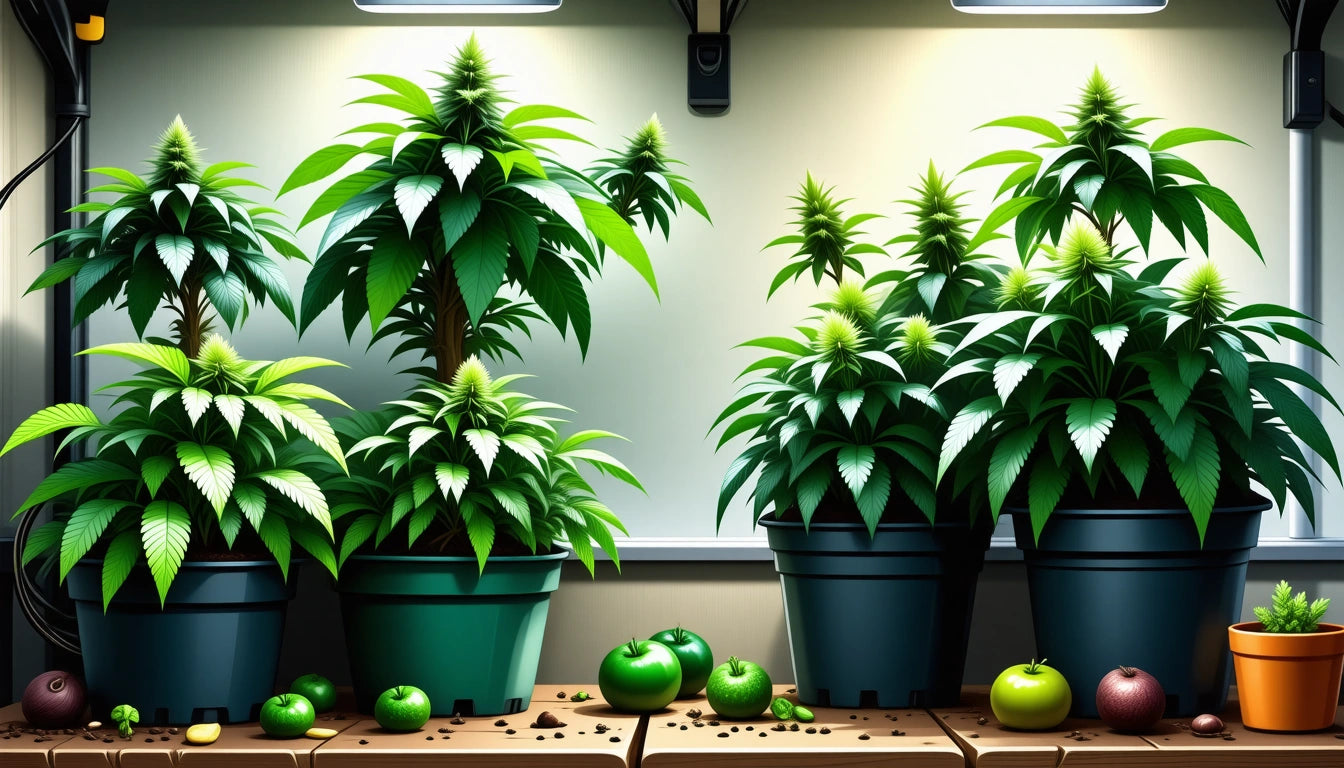Table of Contents
- Understanding Cannabis Nutrients: The Foundation for Success
- Best Hydroponic Nutrients for Weed: Water-Based Excellence
- Top Bloom Nutrients for Weed: Maximizing Flower Production
- Nutrient Schedules and Feeding Strategies
- Organic vs. Synthetic Nutrients: Pros and Cons
- Identifying and Correcting Nutrient Deficiencies
- Future Nutrient Trends in Cannabis Cultivation
Top Nutrients for Growing Weed: A Guide to Hydroponic and Bloom Options
Selecting the right nutrients is crucial for successful cannabis cultivation, whether you're growing in soil or using hydroponic systems. The best nutrients for weed provide essential elements that support robust vegetative growth and abundant flower production. This comprehensive guide explores top-performing nutrient solutions for different growing methods and growth stages.
Understanding Cannabis Nutrients: The Foundation for Success
Cannabis plants require a precise balance of macronutrients and micronutrients throughout their lifecycle. The three primary macronutrients, represented as NPK (Nitrogen, Phosphorus, Potassium), serve different functions:
- Nitrogen (N): Essential for leaf and stem development during vegetative growth
- Phosphorus (P): Critical for root development and flower formation
- Potassium (K): Supports overall plant health, disease resistance, and water regulation
Beyond NPK, cannabis plants need secondary nutrients (calcium, magnesium, sulfur) and micronutrients (iron, manganese, zinc, copper, boron, molybdenum) for optimal growth. As outlined in this comprehensive nutrient guide, the ideal nutrient profile changes as plants progress from seedling to harvest.
Best Hydroponic Nutrients for Weed: Water-Based Excellence
Hydroponic growing systems deliver nutrients directly to plant roots in water solution, eliminating soil as the growing medium. The best hydroponic nutrients for weed are specially formulated to maintain proper pH levels and provide readily available nutrition.
Top Hydroponic Nutrient Lines
Several manufacturers have developed comprehensive nutrient systems specifically for hydroponic cannabis cultivation:
- Advanced Nutrients pH Perfect Series: Automatically balances pH while delivering precise nutrient ratios
- General Hydroponics Flora Series: A three-part system allowing customized nutrient profiles for each growth stage
- Canna Aqua: Developed specifically for recirculating hydroponic systems with excellent results
- House & Garden: Premium Dutch nutrients known for enhancing flavor profiles
Top Bloom Nutrients for Weed: Maximizing Flower Production
During the flowering stage, cannabis plants benefit from specialized bloom nutrients with higher phosphorus and potassium levels. The best bloom nutrients for weed support bud development, terpene production, and overall yield.
As detailed in this flowering nutrient guide, top bloom boosters include:
- Fox Farm Tiger Bloom: Rich in phosphorus with immediately available nutrients
- Botanicare Liquid Karma: Organic-based bloom enhancer with hormones and amino acids
- Advanced Nutrients Big Bud: Specifically formulated to increase bud mass and density
- Mills Nutrients Ultimate PK: High-concentration phosphorus and potassium supplement
When cultivating cannabis for commercial purposes, many growers find that investing in quality bloom nutrients significantly impacts final product quality. While discussing cultivation supplies, we also recommend exploring premium pre-roll packaging options to properly store and present your harvested flower.
Nutrient Schedules and Feeding Strategies
Successful cannabis cultivation requires adapting nutrient delivery throughout the plant's lifecycle. Most manufacturers provide feeding charts, but these often need adjustment based on specific strains, growing conditions, and water quality.
General Feeding Guidelines
- Seedling stage: Very light feeding ( ¼ strength) or water only
- Vegetative stage: Higher nitrogen ratio (3-1-2 NPK) at ½ to full strength
- Early flowering: Transition to bloom nutrients (1-3-2 NPK)
- Mid to late flowering: Full-strength bloom nutrients plus specific boosters
- Flush period: Clear water only for 1-2 weeks before harvest
This feeding guide provides additional insights into timing and measurement for optimal results.
Organic vs. Synthetic Nutrients: Pros and Cons
When selecting the best nutrients for weed, growers often debate between organic and synthetic options. Each approach offers distinct advantages:
Synthetic Nutrients
Synthetic nutrients provide precise control over nutrient delivery and are immediately available to plants. They typically produce faster growth and can be fine-tuned for specific growth stages. However, they require careful monitoring to prevent nutrient burn and may affect the final flavor profile.
Organic Nutrients
Organic nutrients, as explored in this organic nutrient guide, rely on beneficial soil microbes to break down and deliver nutrition. While they work more slowly, they often produce more complex flavor profiles and are more forgiving with dosing. Many commercial growers use a hybrid approach, combining the benefits of both nutrient types.
Identifying and Correcting Nutrient Deficiencies
Even with the best nutrients for weed, plants may occasionally display deficiency symptoms. Common signs include:
- Nitrogen deficiency: Yellowing of lower leaves
- Phosphorus deficiency: Dark green leaves with purple stems
- Potassium deficiency: Brown spots and yellow leaf edges
- Calcium deficiency: New growth appears twisted or stunted
- Magnesium deficiency: Interveinal chlorosis (yellowing between leaf veins)
Prompt identification and correction of deficiencies are essential for maintaining plant health. This optimization guide provides detailed troubleshooting information.
Future Nutrient Trends in Cannabis Cultivation
The cannabis nutrient market continues to evolve with innovative formulations and delivery systems. Emerging trends include:
- Silicon supplementation for stronger cell walls and stress resistance
- Beneficial bacteria and fungi inoculants to enhance nutrient uptake
- Nano-emulsified nutrients for improved absorption efficiency
- Customized nutrient formulations for specific cannabis genetics
- Sustainable and environmentally friendly nutrient options
As cannabis cultivation becomes increasingly sophisticated, nutrient systems will continue to advance, offering growers more precise tools to maximize quality and yield while minimizing environmental impact.











Leave a comment
All comments are moderated before being published.
This site is protected by hCaptcha and the hCaptcha Privacy Policy and Terms of Service apply.